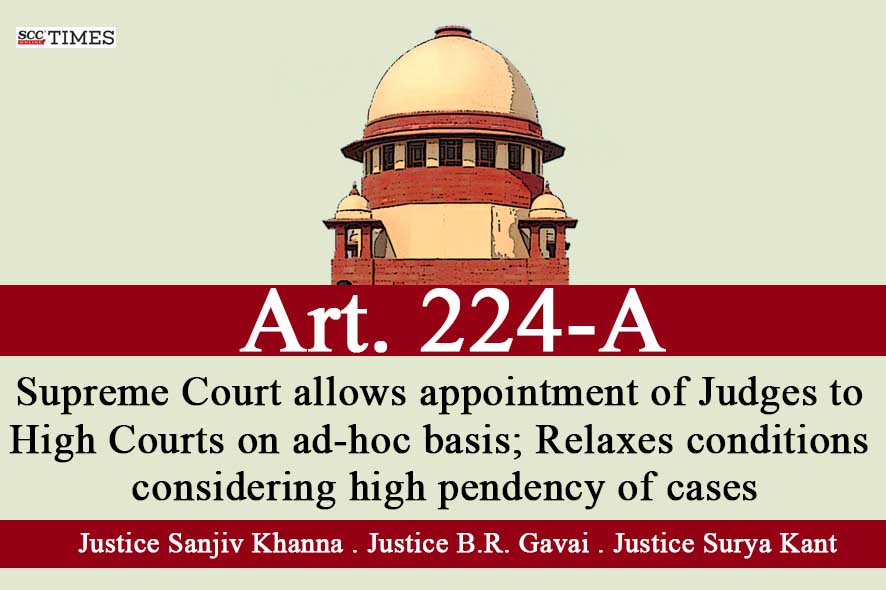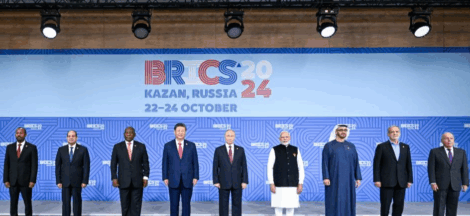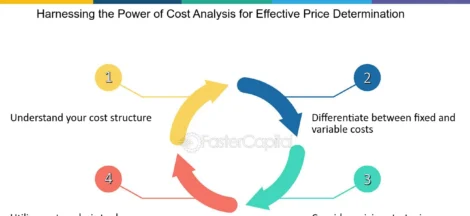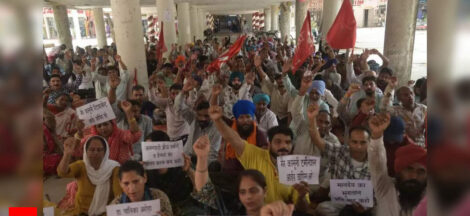By Shreya Bansal
The Indian judiciary, much like a perpetually leaking roof, has for a long time attempted to patch up its structural deficiencies with quick fixes instead of comprehensive repairs. But instead of addressing the gaping wound of unfilled permanent judicial positions, the system has come up with a patch work solution- appointing ad hoc judges. A stopgap measure that will do little to fix the actual problem and merely delay the collapse.
On January 30, 2025, the Supreme Court of India allowed High Courts to appoint retired judges on an ad-hoc basis to address the issue of growing backlog of cases in courts across the country. This judgment relaxed a previous condition set in the 2021 Lok Prahari case, which had restricted such appointments to High Courts with judicial vacancies exceeding 20%. These judges, appointed under Article 224-A of the Constitution, exercise the same powers as sitting judges and are compensated similarly, excluding pension.
Historically, ad-hoc judicial appointments have been rare, with only three documented instances: in 1972, Justice Suraj Bhan was appointed to the Madhya Pradesh High Court to decide election petitions; in 1982, Justice P. Venugopal was appointed to the Madras High Court; and in 2007, Justice O.P. Srivastava was appointed to the Allahabad High Court to preside over the Ayodhya case.
India’s judiciary is already grappling with a severe shortage, with just 21 judges per million people—a dismal ratio for a country of over a billion. Yet, instead of addressing this crisis by filling permanent positions, judicial vacancies continue to pile up. 367 High Court seats remain unfilled, with vacancy rates exceeding 40% in several courts, and an overall shortfall of 29.4%. The situation in Trial Courts is even more dire, with 5,292 judicial posts lying vacant as of February 4, 2025, according to Unstarred Question No. 723, answered on February 7, 2025. The judiciary has decided that instead of filling up the vacant posts, they’d rather make do with temporary replacements. The message is loud and clear, forget efficiency, forget long-term reforms, and most importantly, forget the judges who have spent years waiting for promotion. Why translate seniority into career progression when you can sideline them for a quick fix?
Rather than prioritizing the swift appointment of permanent judges and filing up the vacant posts the system seems more inclined to lean on ad hoc solutions. The misplaced reliance on ad hoc judges risks creating a culture of evasion , refusing to look at the proverbial elephant in the room . Instead of pushing for permanent appointments, the judiciary may continue to view ad hoc appointments as an easy alternative. This attempt to rely on ad hoc judges to manage the judicial backlog will ultimately be a Pyrrhic victory, where fleeting solutions only prolong the underlying crisis that demands a real, lasting remedy.
Trial Court Judges aren’t just placeholders playing interchangeable parts in the system. They are the backbone of our legal system, and yet their service is rewarded with the uncertainty . Senior judges who have dedicated decades to the judiciary may feel sidelined when ad hoc judges are brought in to tackle pending cases. The very idea of temporary appointments suggests a lack of faith in the existing judicial cadre, sending a message that their efficiency is not enough. This is not just a problem, of a symbolic putdown, it has real consequences for judicial morale, affecting the commitment and engagement of judges who must continue to work in an environment that increasingly turns its back towards them. How long can we expect judges to stay dedicated when their promotions are endlessly delayed, and now ad hoc appointments threaten to push them aside, a blatant reminder that the system has little regard for the years of service put in by Trial Court Judges. It disrupts career progression for sitting judges, limiting opportunities for those who have spent years within the system.
Young legal professionals considering a judicial career will see this as a discouragement, reinforcing the perception that the judiciary is an unstable and unpredictable profession.
But morale isn’t the only casualty. Indian courts already struggle with a chronic shortage of basic amenities. Adding ad hoc judges into this system isn’t going to magically solve these issues, it’s going to exacerbate them. More judges mean more cases, which means more clerical work more support staff, more logistical processing of data more salaries, more administrative costs, and more strain on an already limited budget. These infrastructural constraints were raised in the Lok Sabha on February 7, 2025, where it was noted: “The pendency of cases in courts is attributable to several factors, including the availability of physical infrastructure and supporting court staff…” (unstarred question no. 723). There is no planning, for infrastructure knowing fully well that the existing infrastructure is already teetering on the brink of collapse.
The move also presents a significant challenge to the independence of the judiciary itself. When ad-hoc judges are appointed post-retirement, there are multiple facets of this issue that, logically, could erode the perception of lack of independence. After all justice must not only be done, but must also be seen to be done. Sitting judges serve fixed terms and are not tied to any future employment expectations within the judiciary once that term comes to an end. This creates a clearer boundary between the judges and the external influences that exist outside the courtroom. However, when an individual is appointed as an ad hoc judge seemingly as a post-retirement benefit, it can create an unspoken debt to the system that has provided such a benefit. This creates a real risk that these judges may lean in favour of political or governmental interests and the mere perception of such a bias is a threat to judicial credibility.
If ad hoc appointments are the answer, then the judiciary is asking the wrong question. The real crisis isn’t just judicial backlog, its systemic apathy and indifference, where efficiency, morale, and infrastructure are sacrificed in favour of a convenient but fundamentally flawed workaround. A judiciary that relies on temporary solutions to address a permanent problem is setting itself up for long-term decay, short-term optics over meaningful reform. (IPA Service)
Courtesy: The Leaflet




 Will Parvesh Varma’s Luck Shine As Next Delhi CM After Defeating Arvind Kejriwal?
Will Parvesh Varma’s Luck Shine As Next Delhi CM After Defeating Arvind Kejriwal? 